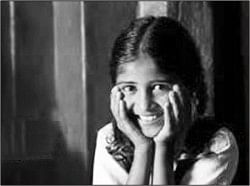Rights corner
Convention on the Rights
of the Child turns 21
21 years ago on November 20, 2010 a remarkable milestone for the protection and realisation of the rights of all children - the Convention on the Rights of the Child was officially opened for signature by United Nations Member States.
The Convention on the Rights of the Child (CRC) is the first legally binding instrument designed to protect and promote the rights of people under 18 years old. Its adoption by the UN General Assembly on 20 November 1989 is celebrated annually as Universal Children's Day. It has now achieved near-universal acceptance, with ratification by 193 parties.
The Convention sets out rights that children enjoy as human beings and also identifies special rights and protections they require during this vulnerable phase of their lives.
The rights in the Convention are predicated on the principles of universality, non-discrimination and accountability. This means that they apply equally to every child, including the most disadvantaged. The Convention creates a moral imperative, determined by the world leaders and governments who drafted and subsequently joined the Convention, to ensure that efforts to protect and promote children's rights must be equitable. Every child, not matter how disadvantaged by parental income or family circumstance, geography, disability, race or gender, has an equal right to enjoy the protection of the Convention and the rights it sets out.
 There are 54 articles in the CRC. These set out universal human rights, including the rights to:
There are 54 articles in the CRC. These set out universal human rights, including the rights to:
* survival
* develop to the fullest
* protection from harmful influences, abuse and exploitation
* participate fully in family, cultural and social life
Every one of these rights is essential to human dignity and to the harmonious development of every child. In a more concrete sense, these rights set global minimum standards for children's health care, education and their access to legal, civil and social services.
By ratifying or acceding to the Convention, national governments commit themselves to protecting and ensuring children's rights as outlined in the Convention and they hold themselves accountable for this commitment before the international community.
In every part of the world, there are examples of how the Convention has impacted law and practice. In Burkina Faso, for example, a Children's Parliament was created to review proposed legislation in response to the principle of participation set out in the Convention.
The CRC was the first international convention to be ratified by South Africa, leading to legislative changes such as a prohibition of corporal punishment and the development of a separate juvenile justice system.
The Russian Federation set up new juvenile and family courts to meet its responsibilities to children under the CRC, while Morocco established a National Institute to Monitor Children Rights.
At UNICEF the provisions and principles of the Convention guide our mission. By advocating for the protection of children's rights and helping children to meet their basic needs and expand their opportunities, UNICEF works towards the realization the rights for every child. The focus of our work is not just on building the capacity of duty bearers, but just as much to build the capacity of rights holders.
The Convention is complemented by two Option Protocols; on the involvement of children in armed conflict, and on the sale of children, child prostitution and child pornography.
Source: UNICEF.